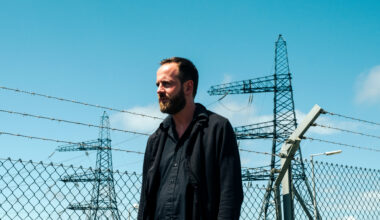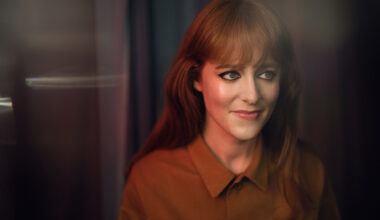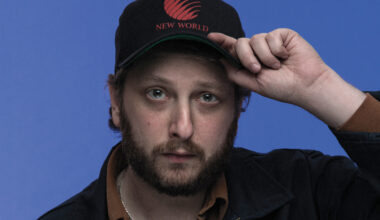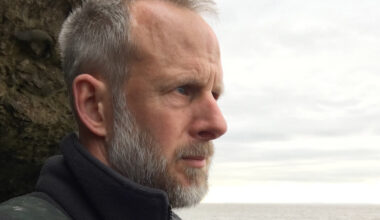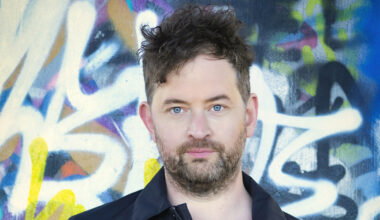From Robert Moog and Donald Buchla to Peter Zinovieff and Alan Pearlman, the ’Bright Sparks’ album and film celebrate the pioneers of analogue synthesis with obsessive aplomb
A feast of modular melodies and analogue anecdotes, ‘Bright Sparks’ is an audio-visual love letter to the founding fathers of electronic music. The project began as a concept album by I Monster, aka Sheffield avant-rock surrealists and antique synth collectors Dean Honer and Jarrod Gosling, but has now blossomed into a feature-length documentary exploring the colourful human stories behind the first wave of prototype synthesisers. Vince Clarke has called the film “engrossing and fascinating”, while Brian Eno branded it a “loving and exhaustive study”.
I Monster’s ‘Bright Sparks’ album features eight tracks, each a droll narrative detailing the invention of a classic vintage electronic instrument and set to music made with the eight machines themselves. The subjects include iconic production models like the Moog (‘The Fantastic Tale Of Dr Moog And The Birth Of The Shimmering Beast’) and the Mellotron (‘The Bradley Brothers Realise The Transmutation Of The Chamberlin To The Mellotron’), as well as more eccentric one-offs like the EMS Synthi and the EDP Wasp.
John Foxx makes a guest appearance on the album, as does Tara Busch from I Speak Machine. Comedian and cult music connoisseur Stewart Lee is on there too. I Monster partly recorded the tracks at the London studio of Foxx’s regular collaborator Benge, who is the owner of many rare synths himself.
“He’s got a 60s Buchla,” Dean Honer gushes. “And he’s got an ARP 2500, which was the first modular ARP that Alan Pearlman built. It gave us the excuse to use as many of the original instruments as possible. The album is sort of 95 per cent original, there are little bits of soft synth on there, but Jarrod and I have got a lot of these instruments ourselves anyway.”
Once the recording was underway, I Monster came up the idea of making a documentary to accompany the album. Nothing too long, nothing too fancy. At the time, Honer and Gosling were having discussions with fellow analogue acolytes Dave Spiers and Chris Macleod from G Force Software, specialists in soft synth emulations of vintage electronic instruments, and they mentioned their plans to the G Force guys. Despite their lack of experience in the world of film, Spiers and MacLeod agreed to direct and finance the project. And before very long, what started out as a video short had expanded into what Spiers calls “an epic nerdfest” spanning more than two hours.
The list of vintage synths and their creators featured on the ‘Bright Sparks’ album was already set in stone before I Monster brought Dave Spiers and Chris Macleod on board, but there was obviously crossover in their shared interests.
“We’ve been doing stuff for G Force for years and we’ve designed sounds for their synthesisers,” says Honer. “So we thought it would be nice to include all the things they have with their software.”
For his part, Spiers was keen to help immortalise the early synthesiser pioneers on film, especially after failing to get Robert Moog to autograph the back panel of his Minimoog a decade ago. Moog died soon afterwards and the chance was lost.
“I was fortunate enough to know Bob Moog reasonably well and his human qualities were equally as interesting as his engineering abilities,” notes Spiers. “Chris and I never emulate anything at G Force unless we love the back story. In fact, it’s usually the back story that gets us more interested in the quirks of an instrument. So I started to think, ‘OK, we’ve got a really finite amount of time, we’re starting to lose these people’.”
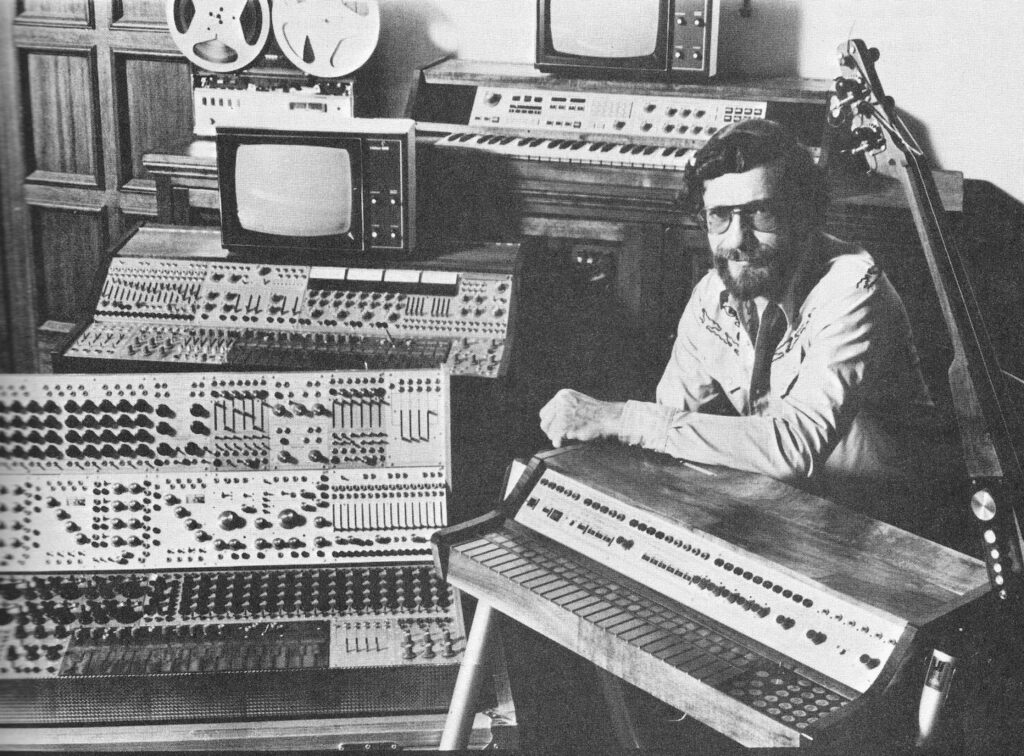
Some of the inventors celebrated in the ‘Bright Sparks’ documentary are sadly already dead, while others proved difficult to track down or reluctant to talk. But Alan R Pearlman, reclusive creator of the seminal ARP synths, finally agreed to appear on camera after “a lot of fanboy persuasion on the phone”. Jumping on a flight to Boston, the filmmakers conducted a fascinating interview and then shared an eye-opening dinner with Pearlman and his wife, a tough-as-nails Holocaust survivor.
“Three concentration camps,” Spiers says, shaking his head. “That was an amazingly humbling experience. In fact, we wanted to get the camera back out, but it turned out Steven Spielberg had already filmed her for his Shoah Foundation, a kind of living museum about the Holocaust.”
The next stop for the directing duo was a spooky backwater town in rural New Hampshire, home to former ARP engineer Dennis Colin, who was seriously depressed after a recent bereavement.
“Dennis himself died not long after our visit,” says Spiers. “He shot himself. It was horrendous. He was threatening to do it while we were there. He was quite a formidable character. But he really wanted to tell his story, and actually it was his daughter who really made it happen.”
There are happier tales in the film too. The rather colourful shared history behind the American Chamberlin keyboard, a kind of prototype tape machine sampler, and its British cousin the Mellotron, feels like a cross between an Ealing Comedy and a Cold War espionage thriller.
“It is a great story,” Honer laughs. “Trying to get that into a song is quite difficult, I can tell you! That could be a complete album in itself.”
Between chats with engineers and inventors, the filmmakers also interview lots of famous analogue synth heads, including Mute Records boss Daniel Miller, Goldfrapp composer Will Gregory, Portishead’s Adrian Utley, Alessandro Cortini from Nine Inch Nails, Billy Currie and Chris Cross of Ultravox, and Underworld duo Karl Hyde and Rick Smith.
“I’ve worked with Underworld since about 1991,” Spiers explains. “For me, the key was getting Rick, because Rick just doesn’t talk! But he was brilliant for this. ‘Good things come out of a good heart that’s obsessed’, that’s the line I take away from that experience.”
All the same, several musical and technological icons either couldn’t or wouldn’t be interviewed. Donald Buchla, for instance.
“I really tried to talk to Don, but he was very ill at the time,” Spiers shrugs. “We also got blown out by a couple of people. Wendy Carlos blew us out big time. But she kind of justified it by saying she thought the modular Moog was a pig of a machine and that she felt everyone was looking at this stuff with rose-tinted specs.”
Negotiations with Keith Emerson also came to nothing. The keyboard legend’s suicide earlier this year was a personal blow to Spiers and MacLeod.
“Chris worked with Keith for about five years, but we just couldn’t pin him down,” Spiers says. “That was a great shame, but it just reinforced the fact that these people aren’t going to be around for ever and it’s really important that their stories are told while they are here.”
Dave Spiers is the first to admit that the ‘Bright Sparks’ documentary is a low-budget labour of love, full of rough charm and quirky personality, much like the machines it celebrates. But one of his hopes is to upgrade the film in the future, George Lucas style, adding interviewees he missed first time around. He even talks of a possible sequel showcasing some of the electronic innovators overlooked in ‘Bright Sparks’, such as Tom Oberheim, Roger Linn, Roland founder Ikutaro Kakehashi and the late Tsutomu Katoh of Korg.
“I have this idea of using it like an evolving document,” says Spiers. “I think that would be brilliant.”
The ‘Bright Sparks’ album and documentary reflect an ever-growing worldwide fascination with analogue synthesisers. So what’s the appeal? Dean Honer and Dave Spiers both express a deep and enduring love for these magnificent machines, agreeing that they can be temperamental and cumbersome at times, but eagerly pointing out that they’re also full of character.
“A lot of younger people coming into music are just used to seeing something on a screen and moving a mouse to move a button, one thing at a time,” Honer explains. “Working like that is so laborious. Having a whole bank of knobs in front of you is more real and more tactile and it’s also simpler. Ultimately, it’s a lot more fun to make sounds this way.”
I Monster’s ‘Bright Sparks’ album is out on Twins Of Evil Recordings. The ‘Bright Sparks’ documentary is available from brightsparks.movie
